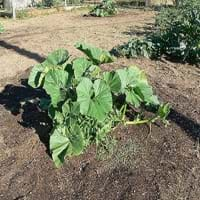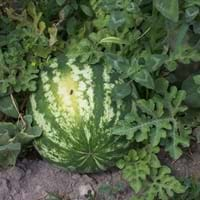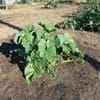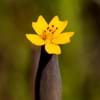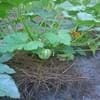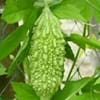Life Span
Annual and Perennial
Annual and Perennial
Origin
North America, Mexico, Central America
Africa
Types
Winter squash, Field pumpkin, Crookneck pumpkin
Not Available
Habitat
close to waterfalls, Riverbanks, Warmer regions, waterways, Wet ground
subtropical regions, Tropical regions
USDA Hardiness Zone
1-6
10-12
Sunset Zone
A1, A2, A3, H1, H2, 1a, 1b, 2a, 2b, 3a, 3b, 4, 5, 6, 7, 8, 9, 10, 11, 12, 13, 14, 15, 16, 17, 18, 19, 20, 21, 22, 23, 24
H1, H2, 1a, 1b, 2a, 2b, 3a, 3b, 4, 5, 6, 7, 8, 9, 10, 11, 12, 13, 14, 15, 16, 17, 18, 19, 20, 21, 22, 23, 24
Habit
Vining/Climbing
Prostrate/Trailing
Flower Color
Yellow
Yellow
Flower Color Modifier
Bicolor
Bicolor
Fruit Color
Orange Red, Yellow Brown
Red, Dark Green
Leaf Color in Spring
Green, Light Green
Green, Dark Green
Leaf Color in Summer
Green, Dark Green
Gray Green
Leaf Color in Fall
Green, Dark Green
Gray Green
Leaf Color in Winter
Not Available
Not Available
Leaf Shape
Heart-shaped
lobed or unlobed
Plant Season
Early Winter
Summer, Fall
Sunlight
Full Sun
Full Sun
Growth Rate
Very Fast
Very Fast
Type of Soil
Well drained
Loam
The pH of Soil
Neutral
Neutral
Soil Drainage
Well drained
Well drained
Bloom Time
Summer
Indeterminate
Tolerances
Drought
Drought
Where to Plant?
Ground
Ground
How to Plant?
Seedlings
Seedlings
Plant Maintenance
Medium
Medium
Watering Requirements
Keep the ground moist but not water-logged, Requires consistently moist soil, Requires regular watering, Requires watering in the growing season, Water in the early morning hours
Average Water Needs
In Summer
Lots of watering
Lots of watering
In Spring
Moderate
Moderate
In Winter
Average Water
Average Water
Soil Drainage Capacity
Well drained
Well drained
Sun Exposure
Full Sun
Full Sun
Pruning
Remove damaged leaves, Remove dead branches, Remove dead leaves, Remove Vines
Remove damaged leaves, Remove dead branches, Remove dead leaves
Fertilizers
Apply 5-10-5 amounts, Nitrogen, Phosphorous, Potassium
All-Purpose Liquid Fertilizer
Pests and Diseases
Red blotch
Grasshoppers, Worms
Plant Tolerance
Drought
Drought
Flower Petal Number
Single
Single
Foliage Texture
Coarse
Medium
Foliage Sheen
Matte
Matte
Attracts
Beetles, Bugs
Bees, Birds, Butterflies
Allergy
Asthma, breathing problems, Itchiness, Nasal Congestion, Swelling, Swelling in the face
Analgesic, Anti-inflammatory, Antimicrobial, Antioxidants
Aesthetic Uses
Not Used For Aesthetic Purpose
Not Available
Beauty Benefits
Good for skin and hair, Not Available, Skin cleanser, Skin Problems
Not Available
Environmental Uses
Air purification
Air purification
Medicinal Uses
Anemia, Antibacterial, anti-cancer, cholesterol-lowering, Fertility, High blood pressure, Immunity, Liver problems, Prevention of convulsion, Regulates Blood Sugar
Cardiac, Urinary problems
Part of Plant Used
Fruits, Leaves, Seeds
Fruits, Leaves, Seeds
Other Uses
Used As Food, Used as Ornamental plant, Used for its medicinal properties, Used in salads
Oil is used in perfume, soaps, creams, etc., Used to make juice
Used As Indoor Plant
Yes
No
Used As Outdoor Plant
Yes
Yes
Garden Design
Edible, Herb / Vegetable, Vine
Edible, Fruit / Fruit Tree, Herb / Vegetable, Tropical, Vine
Botanical Name
CUCURBITA pepo 'Wolf'
CITRULLUS lanatus 'Sugar Baby'
Common Name
Pumpkin
Sugar Baby Watermelon, Watermelon
In Hindi
कद्दू
Sugar Baby Watermelon
In German
Kürbis
Sugar Baby Watermelon
In French
Citrouille
Sugar Baby Watermelon
In Spanish
Calabaza
Sugar Baby Watermelon
In Greek
Κολοκύθι
Ζάχαρη μωρό Καρπούζι
In Portuguese
Abóbora
Sugar Baby Watermelon
In Polish
Dynia
Arbuz Baby cukru
In Latin
cucurbita
Sugar Baby Watermelon
Phylum
Magnoliophyta
Embryophyta
Class
Magnoliopsida
Dicotyledonae
Order
Violales
Cucurbitales
Family
Cucurbitaceae
Cucurbitaceae
Genus
Cucurbita
Citrullus
Clade
Angiosperms, Eudicots, Rosids
Angiosperms, Eudicots, Rosids
Tribe
Cucurbiteae
Benincaseae
Subfamily
Cucurbitoideae
Cucurbitoideae
Number of Species
Not Available
Importance of Pumpkin and Sugar Baby Watermelon
Want to have the most appropriate plant for your garden? You might want to know the importance of Pumpkin and Sugar Baby Watermelon. Basically, these two plants vary in many aspects. Compare Pumpkin and Sugar Baby Watermelon as they differ in many characteristics such as their life, care, benefits, facts, etc. Every gardener must at least have the slightest clue about the plants he wants to plant in his garden. Compare their benefits, which differ in many ways like facts and uses. The medicinal use of Pumpkin is Anemia, Antibacterial, anti-cancer, cholesterol-lowering, Fertility, High blood pressure, Immunity, Liver problems, Prevention of convulsion and Regulates Blood Sugar whereas of Sugar Baby Watermelon is Cardiac and Urinary problems. Pumpkin has beauty benefits as follows: Good for skin and hair, Not Available, Skin cleanser and Skin Problems while Sugar Baby Watermelon has beauty benefits as follows: Good for skin and hair, Not Available, Skin cleanser and Skin Problems.
Compare Facts of Pumpkin vs Sugar Baby Watermelon
How to choose the best garden plant for your garden depending upon its facts? Here garden plant comparison will help you to solve this query. Compare the facts of Pumpkin vs Sugar Baby Watermelon and know which one to choose. As garden plants have benefits and other uses, allergy is also a major drawback of plants for some people. Allergic reactions of Pumpkin are Asthma, breathing problems, Itchiness, Nasal Congestion, Swelling and Swelling in the face whereas of Sugar Baby Watermelon have Analgesic, Anti-inflammatory, Antimicrobial and Antioxidants respectively. Having a fruit bearing plant in your garden can be a plus point of your garden. Pumpkin has showy fruits and Sugar Baby Watermelon has showy fruits. Also Pumpkin is not flowering and Sugar Baby Watermelon is not flowering . You can compare Pumpkin and Sugar Baby Watermelon facts and facts of other plants too.
